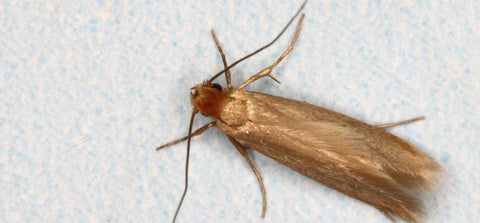Before you leave...
Take 20% off your first order
20% off
Enter the code below at checkout to get 20% off your first order

Advice and information on Clothes and Food Moths
A variety of moth species and their larvae feed on textiles such as wool, hair, fur, feathers and debris. This includes the Brown House Moth, White Shouldered House Moth and the larvae of Clothes Moths
APPEARANCE
Brown House Moths have golden-bronze wings with black flecks. The White Shouldered House Moths has mottled wings with a white head and white shoulders where the wings are attached to the body. Its larvae look like cream-coloured caterpillars with a brown head. The Common Clothes Moth has pale plain golden-buff wings fringed with hair and the larvae are white caterpillars with golden-brown heads.
CAUSES
Clothes moths feed off moisture and food traces, therefore they are attracted to smells, perspiration, food stains and spills.
SIGNS OF INFESTATION
A moth infestation can be detected from irregular holes in clothing, threadbare patches and holes in carpet and other textiles. Damaged fabric often have silken cases, lines of silken threads and fecal pellets over the surface. Moths prefer darker, undisturbed areas in which to lay their eggs. Therefore places, such as under furniture and along skirting boards, corners in drawers and wardrobes are common places.
ACTION
View the full list of Moth products
Food moths and their larvae feed on stored food such as cereals, chocolate, cocoa, dried fruits, nuts and flour products.
APPEARANCE
The adults are mottled grey and brown, about 10-15mm long whilst their larvae are white with brown heads and spin light matted webbing as they feed.
ACTION
View the full list of Moth products
Thanks for subscribing!
This email has been registered!
Take 20% off your first order
Enter the code below at checkout to get 20% off your first order